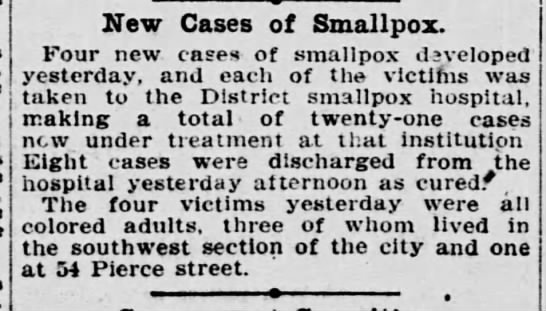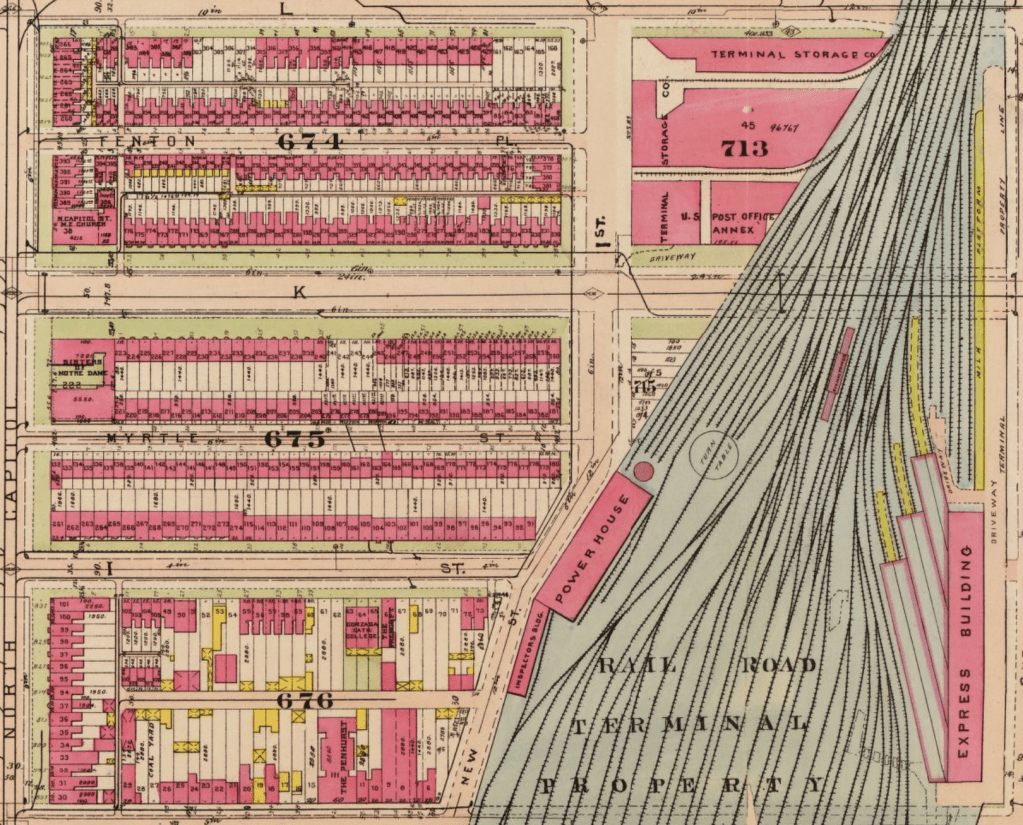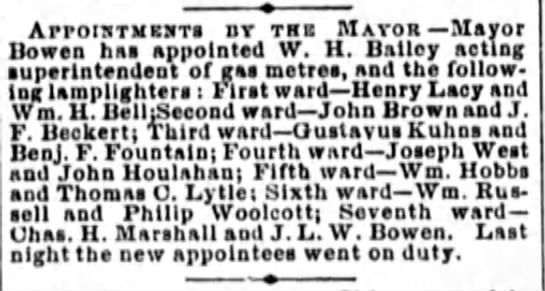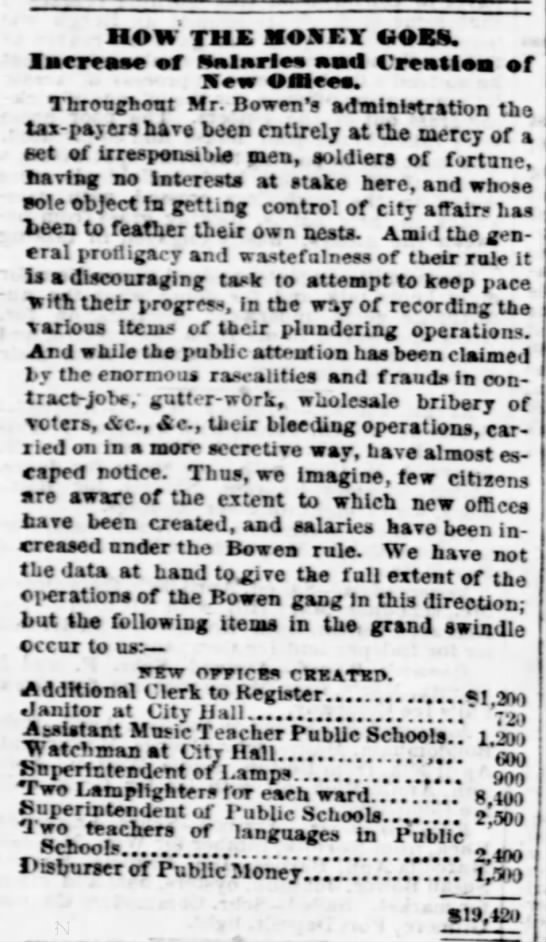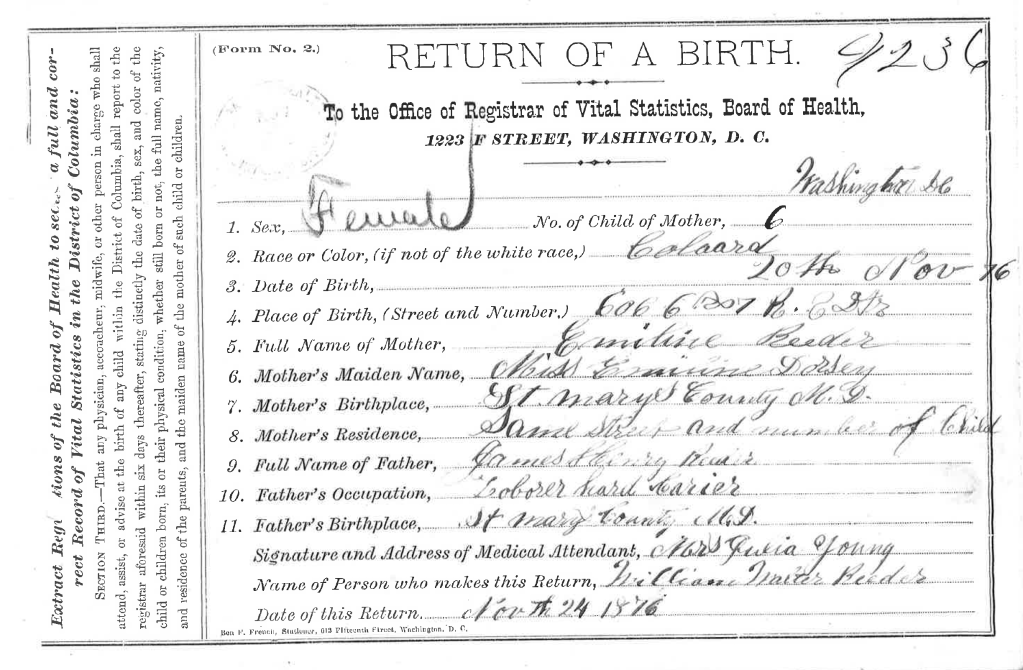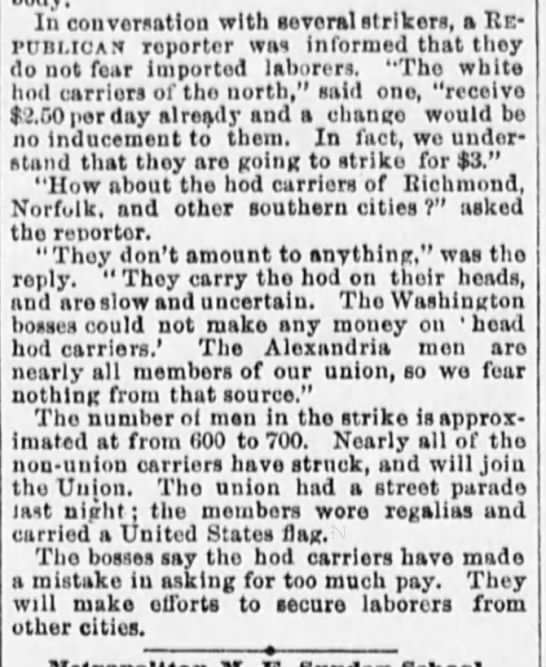Jane Reeder and her children are recorded in the records of the Freedmen’s Bureau, both as residents at Kendall Green, a converted army hospital for refugees from chattel slavery, and as depositors in the Freedmen’s Bank. These records suggests that Jane and her children were among the refugees who came to DC looking for freedom from bondage. None of these records suggest a partner for Jane or father of her children.
In 1873, Jane Reeder is listed in the City Directories as “wid. Thos.” which is the only located record that connects Jane Reeder with Thomas Reeder as partner.

Enslaved by James L Foxwell
Jane and her children escaped from enslavers in District 1 of Saint Mary’s County, Maryland, as documented by the St Mary’s “Slave Statistics”. St. Mary’s County in on the peninsula between the Potomac River and the Chesapeake Bay; District 1 encompasses the southern tip of the county.

In 1867, Maryland created the “Commission of Slave Statistics” for former enslavers to submit enumerated lists of the people they held in bondage on November 1, 1864, when the new Constitution of Maryland emancipated the enslaved people of Maryland. The names of Jane and her children, as well as Thomas, were submitted by enslavers living in District 1 [St. Inigoes’s].
James L. Foxwell submitted a list of 34 names of people whom he enslaved, among them Thomas Reeder, age 45, who left with the Union Army on Dec 28, 1863. In the 1850s and 1860s, James L Foxwell purchased multiple tracts of land along St. Jerome’s Point called “Fresh Pond Neck” and purchased oyster patents.

In addition to owning several schooners and purchasing oyster patent, Foxwell ran advertisements for his “Foxwell Wheat”.

This suggests that the people he enslaved were forced to work the land and the water for his profit.
1850 and 1860 Slave Schedules
In 1850, James L Foxwell enumerated 8 people that he enslaved; 6 females and 2 males on the US Federal Census Slave Schedule. The males were under 10. This suggests that Thomas, who would have been 30, in 1850, was not held in bondage by Foxwell, but a different enslaver.
Foxwell most likely purchased the legal authority to enslave Reeder in the 1850s, as the 1860 US Slave Schedule enumerated 20 people, including a 45 year old male, which corresponds with the age of the list submitted to the commission on “slave statistics”.
Escape
Foxwell recorded that Thomas Reeder, with Nellon Biscoe and Moses Cornish, left with the Union Army on Dec 28, 1863. Many of the people enslaved in St. Mary’s County made their way to Point Lookout, the site of a Union Hospital and Prison. Here, the Army had constructed “contraband” quarters to house the refugees from chattel slavery. Often, the sympathetic nurses and other Lookout personnel would help the refugees find boats to take them north to the District.
Moses Cornish, instead of going north to DC, made his way from Point Lookout to Fort Monroe, Virginia. Fort Monroe, a Union Fort, in Confederate Territory, attracted refugees from slavery as it was where the term “contraband” was coined when Maj. Gen. Butler deemed refugees “contraband” so as to avoid returning escaped people back to their enslavers. Butler was not anti-slavery; he simply did not want the Confederates to benefit from the labor the enslaved people were compelled to do, especially as enslavers shifted their duties from agricultural pursuits to fortifications.
Multiple boats traveled the waters between Fort Monroe and Point Lookout, steamboats, schooners, etc. Any of these may have been used to help Moses travel south instead of north.
Once Moses Cornish made it Fort Monroe, he enlisted in the US Army, joining Battery B of the Regiment 2 of the US Colored Artillery. The two other refugees, Nellon Biscoe and Thomas Reeder, do not appear with Cornish in the ranks of the US Colored Artillery, suggesting that they did not follow him to Fort Monroe.
















